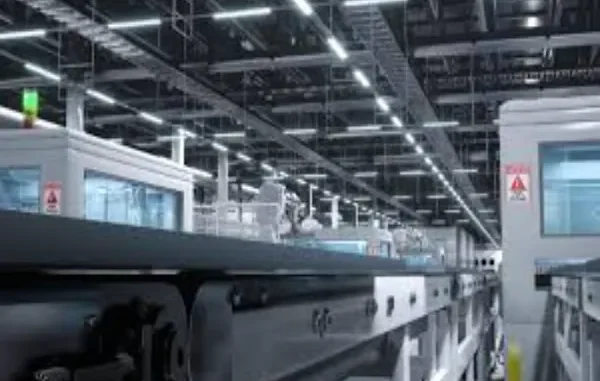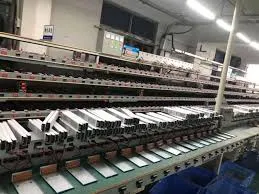
The lighting industry has undergone a dramatic transformation over the last two decades. From incandescent bulbs to compact fluorescents, and now to LEDs, efficiency and innovation have been the driving forces behind this change. At the core of every LED lighting system lies a critical component—the LED power supply. Often overlooked by end users but vital to performance and safety, the power supply ensures that LED products deliver on their promise of energy efficiency, long lifespan, and reliability.
Behind this essential technology are the LED power supply factories, playing a central role in the global lighting supply chain. Their contributions extend far beyond production; they influence quality, innovation, pricing, and the future of sustainable lighting solutions. In this article, we’ll explore the role of LED power supply factories in shaping today’s lighting industry and what makes them indispensable to businesses and consumers alike.

1. Supplying the Backbone of LED Technology
LEDs operate on low direct current (DC) voltage, but most regions supply alternating current (AC) at much higher voltages. The LED power supply, also called a driver or transformer, bridges this gap by converting AC into the appropriate DC output.
Factories that specialize in producing these power supplies are essentially building the backbone of modern LED systems. Without them, the global market for LED strip lights, modules, panels, and smart lighting systems could not exist at scale.
Every LED application—whether residential strip lights, commercial signage, or outdoor street lamps—depends on the reliability of its power supply. As a result, factories that produce these components hold a central position in the value chain.
2. Ensuring Quality and Safety
One of the most important contributions of an LED power supply factory is quality assurance. Poorly designed or manufactured power supplies can lead to flickering lights, premature failures, overheating, or even electrical hazards.
Top-tier factories implement strict testing and quality control processes such as:
- Burn-in tests to simulate long-term use.
- Overload and short-circuit protection checks.
- Thermal management evaluations for high-heat environments.
- Electromagnetic compatibility testing to minimize interference.
Additionally, these factories must ensure compliance with international certifications such as UL, CE, RoHS, and ISO standards. By doing so, they not only protect consumers but also help global brands maintain their reputations in highly competitive markets.
3. Driving Innovation in Lighting Solutions
The global lighting industry is evolving rapidly, with rising demand for smart lighting, IoT integration, and energy-efficient systems. LED power supply factories are at the forefront of this innovation.
They are responsible for developing:
- Ultra-efficient power supplies with efficiency ratings above 90%.
- Smart-compatible drivers that work with Wi-Fi, Zigbee, DALI, or Bluetooth systems.
- Compact, slim designs for modern architecture and space-saving applications.
- Wide input voltage ranges for global compatibility.
- Environmentally friendly products designed with recyclable materials and reduced carbon footprints.
By pushing the boundaries of what LED power supplies can do, factories help lighting companies stay competitive in both consumer and industrial markets.
4. Scaling Global Supply Chains

The LED industry is global in every sense. A luminaire designed in Europe may source chips from Taiwan, strips from China, and power supplies from a factory in Shenzhen. In this interconnected market, power supply factories play a critical role in maintaining supply chain efficiency.
Reliable factories provide:
- Mass production capabilities to meet growing demand.
- Custom manufacturing for clients with unique technical specifications.
- Fast delivery times to prevent project delays.
- Bulk order capacity for distributors and wholesale markets.
With urbanization and sustainability initiatives driving large-scale LED adoption worldwide, factories with robust supply chains ensure that businesses and governments can implement lighting projects on schedule.
5. Supporting Cost Efficiency and Market Growth
Another way LED power supply factories shape the global industry is through cost optimization. Manufacturing at scale allows them to reduce per-unit costs, making LED lighting increasingly affordable for both businesses and end consumers.
Competitive pricing, however, doesn’t come at the expense of quality when working with reputable factories. Instead, efficiencies in production, sourcing, and logistics enable these factories to strike a balance between affordability and reliability.
This balance is crucial in accelerating LED adoption, particularly in developing regions where cost sensitivity is high but the need for energy-efficient solutions is urgent.
6. Customization for Industry Needs
The lighting industry is diverse, spanning residential, commercial, automotive, industrial, and outdoor applications. Each segment has unique requirements, from dimmable drivers for smart homes to weatherproof power supplies for street lighting.
LED power supply factories cater to this diversity by offering customized solutions, including:
- Tailored voltage and current outputs.
- Waterproof IP-rated designs for outdoor use.
- Specialized dimming protocols (TRIAC, 0-10V, DALI).
- Ultra-thin or lightweight models for architectural projects.
By adapting to the needs of different industries, factories enable businesses to offer tailored products that meet market demands more effectively.
7. Partnering for Long-Term Success
For distributors, wholesalers, and lighting brands, partnering with the right factory can determine long-term success. A reliable factory not only provides consistent supply but also offers:
- Technical support during design and installation.
- Flexible order quantities to match market fluctuations.
- Warranty programs that reduce business risks.
- Collaborative innovation for developing next-generation lighting products.
These partnerships often extend beyond simple transactions, evolving into strategic alliances that drive growth for both sides.
8. Contributing to Global Sustainability
LED technology is celebrated for its sustainability benefits, but power supplies are integral to delivering that promise. Efficient drivers reduce wasted energy, minimize heat generation, and extend the life of LED systems.
Forward-thinking factories also adopt eco-friendly manufacturing practices, such as reducing hazardous substances, recycling production materials, and minimizing carbon emissions.
In this way, LED power supply factories contribute to broader global goals of reducing energy consumption, cutting greenhouse gas emissions, and building smarter, greener cities.
9. Challenges in the Industry
While their role is critical, LED power supply factories face significant challenges:
- Raw material shortages that disrupt production.
- Global supply chain instability due to geopolitical or economic shifts.
- Counterfeit and low-quality competitors damaging industry reputation.
- Rising expectations for smarter, more compact, and eco-friendly designs.
Factories that can navigate these challenges with innovation, resilience, and strong supply networks will continue to lead the global market.
Final Thoughts
The global lighting industry is built on countless innovations, but none of them could succeed without the steady reliability of LED power supplies. At the heart of this ecosystem are the LED power supply factories, responsible not only for producing essential components but also for ensuring safety, driving innovation, optimizing costs, and supporting sustainable growth.
For businesses in the lighting sector, understanding the role of these factories is key to making smarter supplier choices and staying competitive in an ever-evolving market. As demand for efficient and smart lighting continues to rise, the factories behind LED power supplies will remain central players in powering the world’s shift toward a brighter, greener future.






Leave a Reply